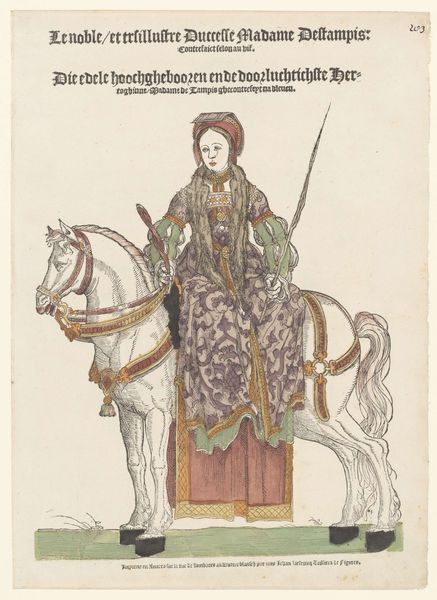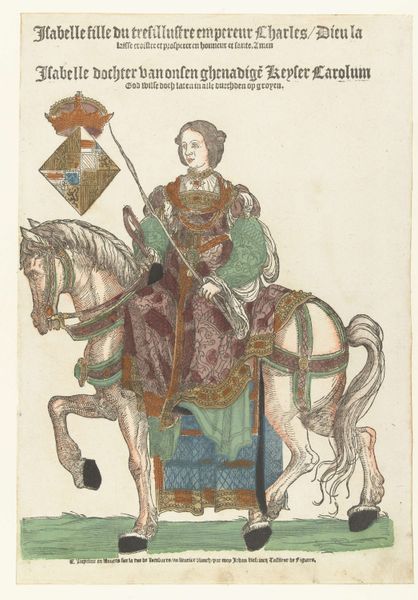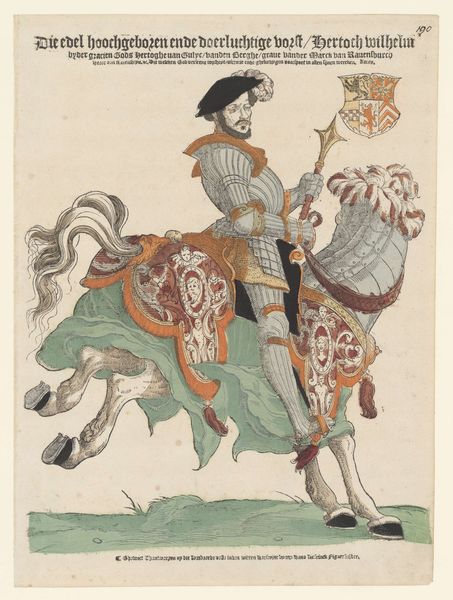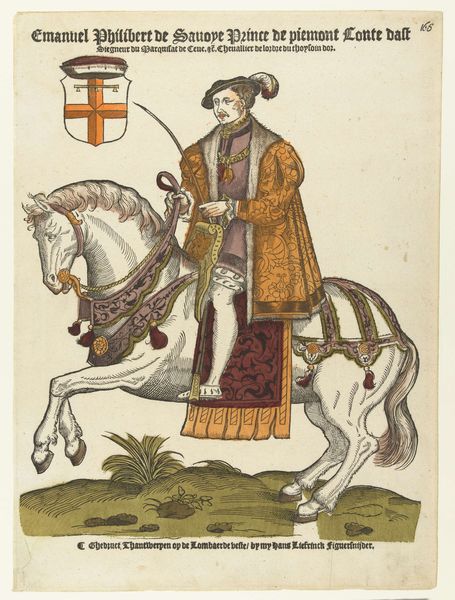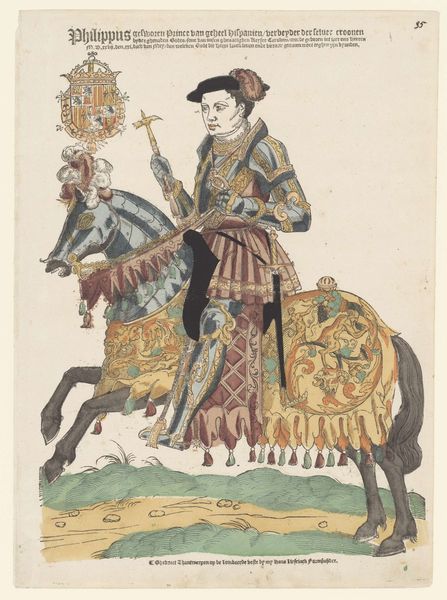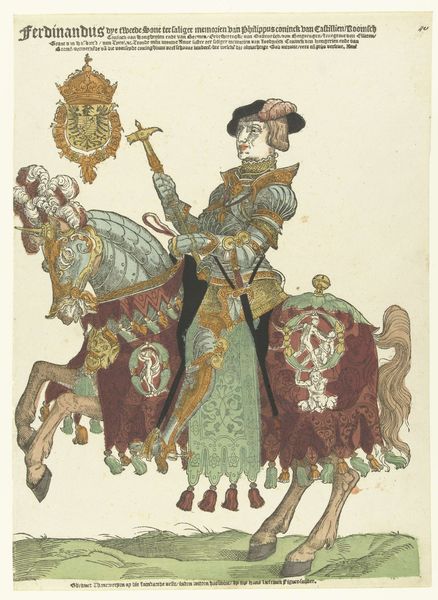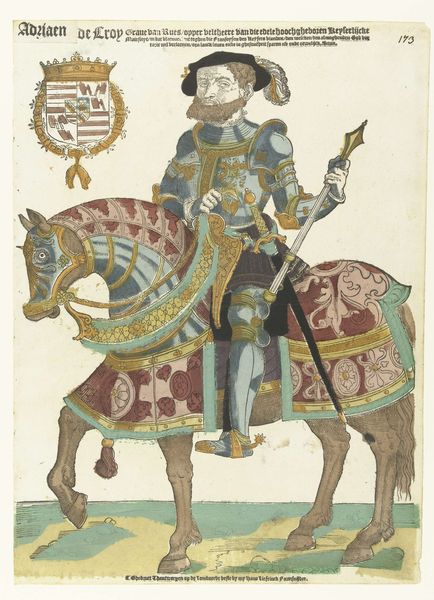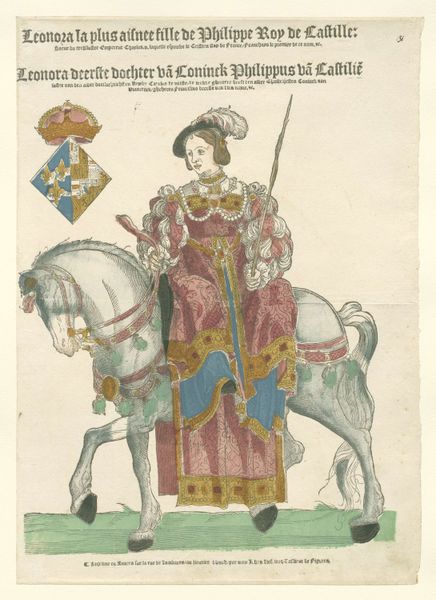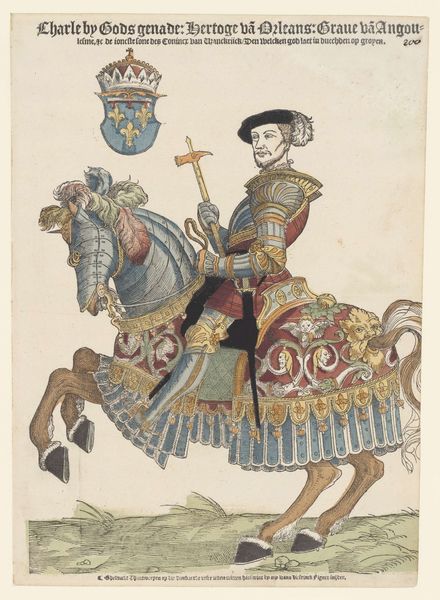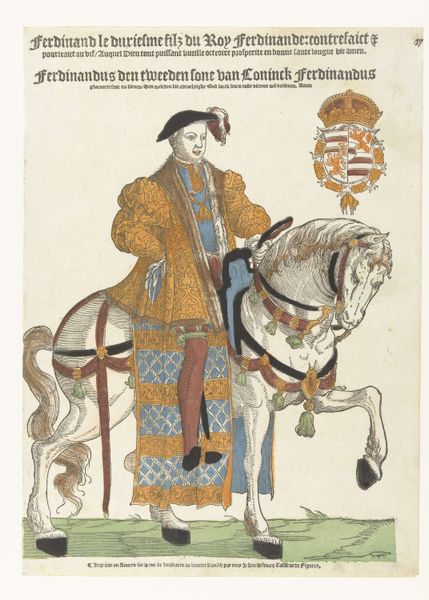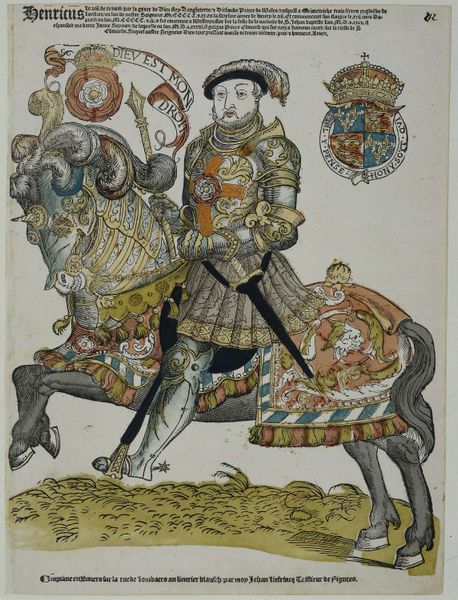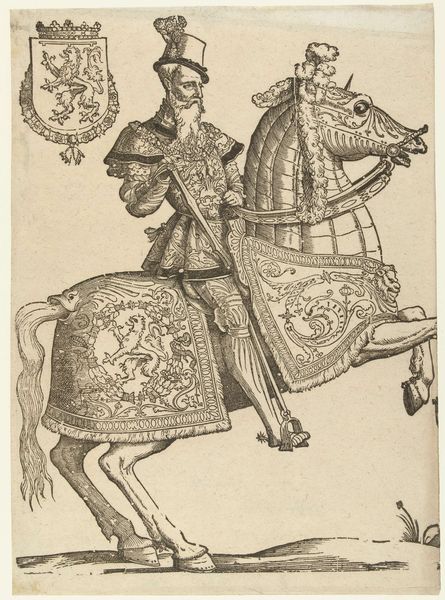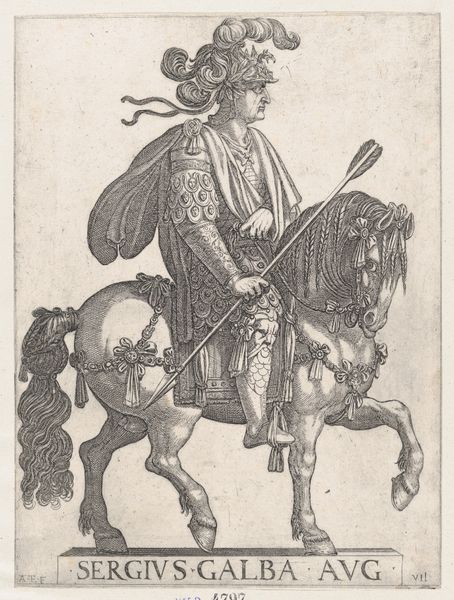
print, engraving
#
portrait
# print
#
traditional media
#
figuration
#
11_renaissance
#
history-painting
#
northern-renaissance
#
engraving
Dimensions: height 405 mm, width 294 mm
Copyright: Rijks Museum: Open Domain
This is Cornelis Anthonisz.'s "Portrait of Philip II on Horseback," made around 1550 using woodcut and letterpress. Notice the horse. Since antiquity, the equestrian portrait has been employed to symbolize power, control, and nobility. We can trace this motif back to ancient Roman emperors, whose statues on horseback projected an image of strength and imperial authority. The way Philip is portrayed atop the horse connects him to a lineage of rulers throughout history who wished to convey a message of dominance and leadership. Think of the equestrian statues of Marcus Aurelius in Rome, or, later, Renaissance depictions of condottieri. The horse is not merely a mode of transport but a charged symbol. But the symbol does not end here. The horse becomes a canvas where collective memories and aspirations are projected. It reappears, transformed and yet still echoing its ancient roots, in modern monuments. This cyclical return reveals the enduring human need to express authority and legacy through visual imagery.
Comments
No comments
Be the first to comment and join the conversation on the ultimate creative platform.
